Last Chance to Catch NYC's Holiday Notalgia Train
We met the voices of the NYC subway on our nostalgia ride this weekend!



Urbanites are on a mission to have local, organically grown food, which in turn has led us to a growing interest in Urban Farming and the greening of our rooftops. With this, a growing interest in beekeeping and organically grown honey. In a hard-fought battle to legalize urban hives, the Board of Health voted to lift the ban in 2010, and today we have beehives in backyards and rooftops, some in amazing and surprising locations. For National Honey Bee Day on August 15th (also listed as August 22nd), we thought we’re bringing you 10 of our favorite hives and festivals in NYC.
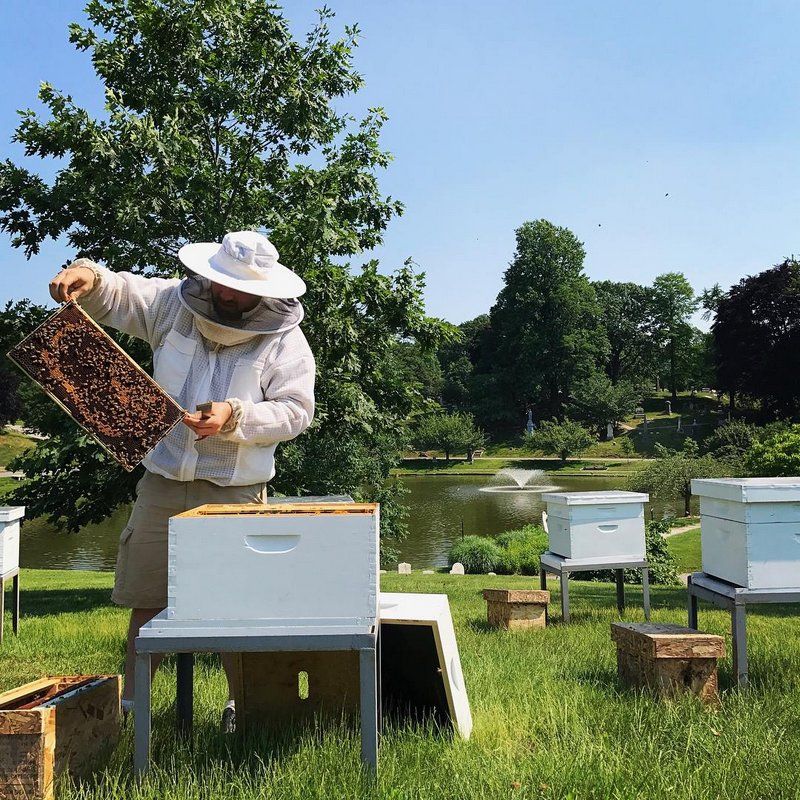
Photo by Amy Grumbling, courtesy Green-Wood Cemetery
As of past April 2015, Green–Wood Cemetery has sold their honey, called The Sweet Hereafter, in the gift shop to help preserve the Green-Wood historic fund. For 2019, the cemetery is expanding the beehives and launching programs for “casual bee and honey fans, as well as serious workshops and classes to get aspiring beekeepers ready to tend their own beehives.”
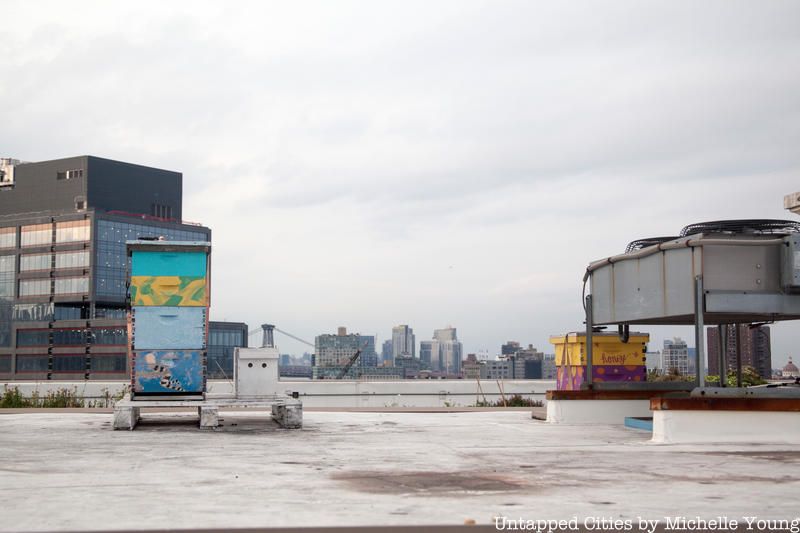
The Brooklyn Navy Yard Apiary is the second location of The Brooklyn Grange. At this location they have 65,000 square feet overlooking the East River. A bee-training program meets there twice a month. Two weekly tours are given on Wednesday mornings, beginning May 20th. However pre-registration is required. In addition, they have a Sunday market in McGolrick Park in Greenpoint, where they sell jars of honey.
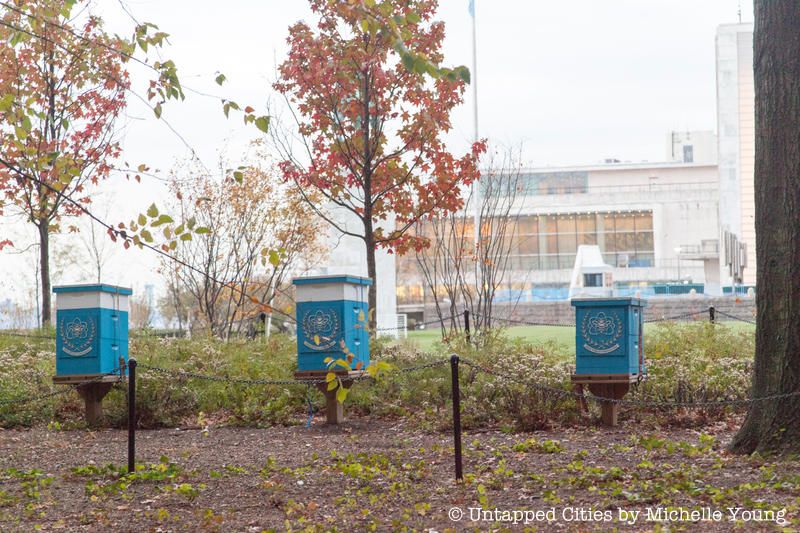
The United Nations gardens, next to the iconic General Assembly building and Secretariat building, has been off-limits for quite a long time. Inside, in addition to the many sculptures donated by member countries, are three beekeeping boxes, painted in the United Nations blue. The bees help pollenate the expansive, gorgeous Rose Garden, also in this area of the complex.

Jacob’s Honey is the honey made from the hundreds of thousands of bees on the Javits Center green roof. There are a total of eight beehives on the roof, with three established last year and two added this year because the bees are flourishing. Three of the hives split, with the new colonies created by the bees themselves.
The Javits Center harvested 250 ounces of honey in the fall of 2017, which was not enough to distribute it widely, but this fall they expect to double or triple that amount. One way to get your hands on a jar of Jacob’s Honey, which has a tag line of “Taste the Buzz” is to come on one of our free tours (next one is on September 30th).
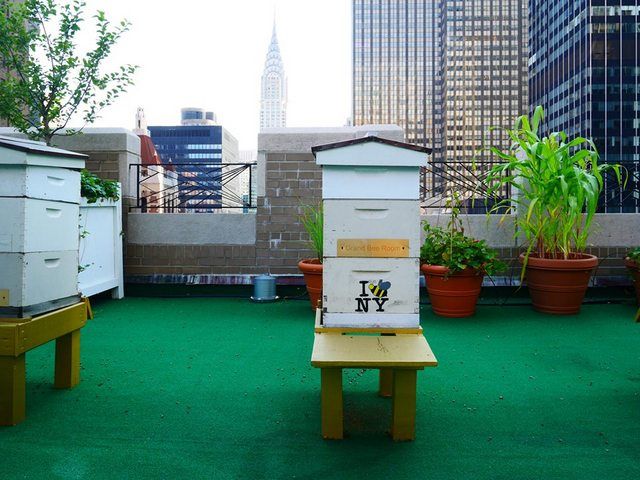
Photo by Corey William Schneider, NY Adventure Club
When Executive Chef David Garcelon came to the Waldorf Astoria, beekeeping had just been legalized in New York. This was honey to his ears, since he ran a similar rooftop garden and apiary in the hotel in Toronto where he came from. Chef Garcelon contacted Andrew Cote’, who wrote the best-practices guide to New York beekeeping, and founded the New York Beekeepers Association – and they created a home for bees on the twentieth floor of the iconic hotel.
More than 300,000 bees in six active hives make honey on the rooftop deck. So successful was this venture, and so popular is beekeeping among the hotels, restauranteurs and companies in the City, that the Waldorf hosted the first “The Battle of the Bees” in 2013. This honey–tasting event pitted the Waldorf against four other organizations that housed beehives on their New York City rooftops, and included Brooks Brothers, The High Line, York Preparatory School and The Durst Organization. The “top of the Waldorf” rooftop honey is not just used for their Afternoon Tea in Peacock Alley. You’ll find it being used everywhere in the hotel from the Guerlain Spa to honey-infused cocktails at the bar.
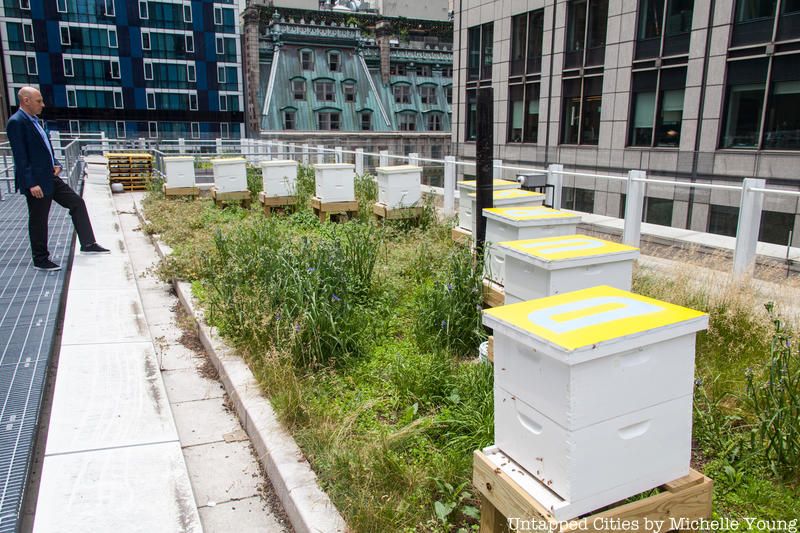
The Durst Organization, a big proponent of beekeeping, has over 100,000 European honeybees in approximately 6,000 square feet on the seventh floor of One Bryant Park. Brooklyn Grange helps to maintain the hives, and harvests the honey. In addition to One Bryant Park, The Durst Organization has green roofs on eight of its other commercial buildings. Their program has become a huge success, and we hear the honey makes for nice gifts throughout the year.
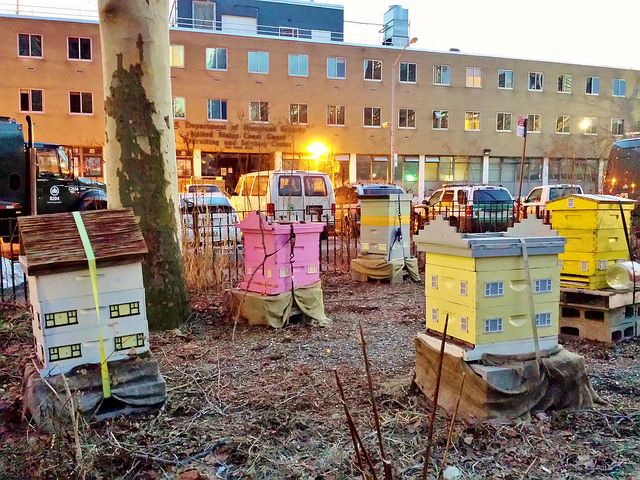
The Battery’s Beehives (Flickr photo via gigi_nyc)
Honeybees are not new to The Battery. In fact, they migrated alongside the Dutch to Lower Manhattan in the 1600s. So when beekeeping became legal in New York City in 2010, the colorful houses designed to look like historic buildings, started going up. NYC Beekeeping Association are overseeing the project, known as BeeVillage in The Battery. This all-volunteer group oversee about a thousand bees in each of the little house hives. Tours of the hives are given for bee enthusiasts.
The Randall’s Island Green Roof is located on the top of the Parks Department’s Five Borough Administration Building, just East of Harlem. This green roof laboratory began in 2007 with 7,000 square feet of plantings. Today, it is 29,000 square feet and is equipped with fertile queens, and around 10,000 worker bees. Each hive can grow to have 30,000 bees during its first season. NYC Beekeeping cares for the honeybee hives and uses the facility for educational and research purposes.
Read about other nature discoveries to be found on Randall’s Island.
And did you know that honey lasts forever? Yes, its acidity, lack of water and the presence of hydrogen peroxide work in perfect harmony, allowing honey an indefinite shelf-life. We look forward to a lively honey season this year in the local Markets throughout our five boroughs, as we wish you all a Happy National Honey Bee Day.
Subscribe to our newsletter